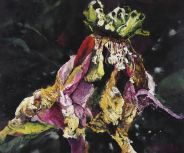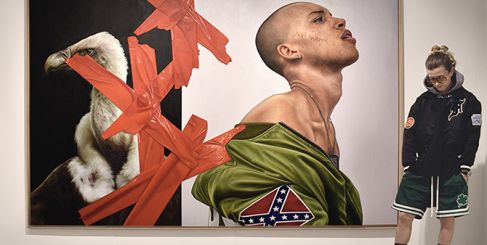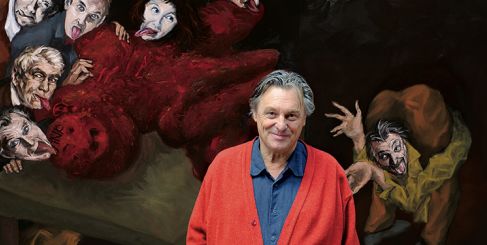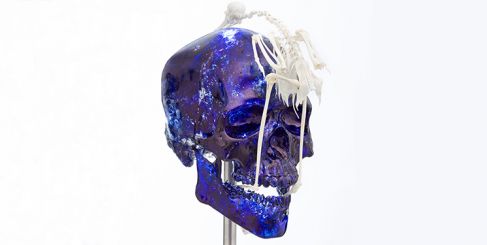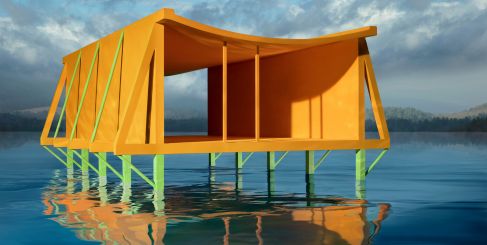News
Galerie Templon shows "Carne Dei Fiori" Philippe Cognée's flowers between life and death 11 January - 7 March 2020
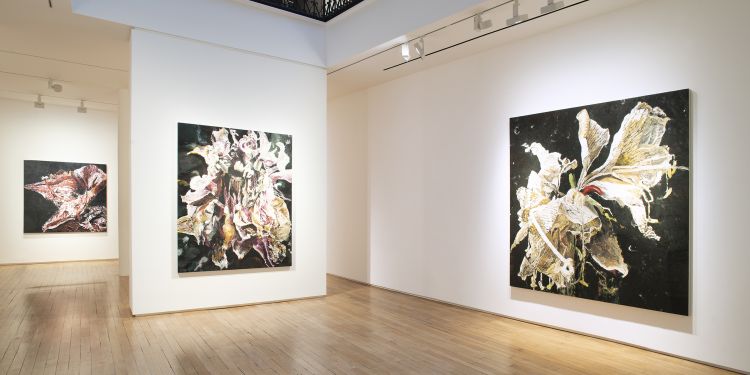
For his return to Galerie Templon, the painter Philippe Cognée, famous for his wax paintings with their blurred effect, is branching off in a radically different direction. After supermarkets, motorways, tower blocks and slaughterhouses, his focus is now on flowers, which he masterfully metamorphoses into monumental vanities.
For many years, Philippe Cognée seemed to be obsessed with everyday life. He made a name for himself with his monochrome paintings of fridges and washing machines that fill the entire canvas. Following this period, his observations of the world through the prism of photography, video and Google led to sizeable compositions featuring tower blocks, buildings, supermarkets, roads, abandoned suburbs and anonymous crowds, toeing the line of abstraction.
His visual language based on melted wax, applied hot, crushed with an iron then ripped off with texture-rich and sensual plastic film, offered a stark contrast to an ostensibly dull and uniform reality. The challenge was of a tall order: to show how the artist could still surprise us with an original interpretation of our environment and bring out a uniform, modern and disembodied reality.
By embracing the theme of flowers, Philippa Cognée seems to have chosen another ordinary subject. However, his sunflower hearts, peonies and amaryllis, dried or wilted, are vastly enlarged and so deformed by the wax that they are hardly recognisable. The encaustic techniques has become more complex. Applied with a brush or slow-dripped, smoothed with an iron or artificially corrugated, wax presentsitself as a material split between two states, echoing the ephemeral in-between state of these flowers, between life and death.
His pieces seem to reconnect with the fundamentals of painting, evoking traditional Flemish still life bouquets as well as Vincent Van Gogh and Georgia O’Keeffe. However, Philippe Cognée is confronting the fundamentals of his own art. His proliferating flowers, complemented by new pastoral landscapes, echo a nature full of magic and mystery, as fragile as it is indomitable, a possible legacy of his childhood time spent in Benin.
We can also recognise the memento mori haunting many of his series, including those dedicated to recycling factories (2005), vanities (2006) and slaughterhouses (2008).
At a time when the question of civilizational and environmental decline torments our societies, Philippe Cognée offers an exhilarating yet subtle answer: a “poetry of decadence.”
Born in 1957, Philippe Cognée works between Nantes and Paris. A Villa Medici’s laureate in 1990 and nominated for the Prix Marcel Duchamp in 2004, Philippe Cognée taught at the Paris Ecole Nationale Supérieure des Beaux Arts for many years.
Philippe Cognée's work has been the subject of numerous solo exhibitions, including at MAMCO (Museum of Modern and Contemporary Art), Geneva (2006), the Haute-Normandie regional contemporary art collection (2007), Musée de Grenoble (2013), Château de Chambord (2014) and Fondation Fernet-Branca de Saint Louis (2016).
His work features in a great many museum collections, such as at the Musée National d’Art Moderne - Centre Pompidou, Fondation Cartier and Collection Louis Vuitton in Paris as well as the Museum Ludwig in Cologne and Musée Cantonal des Beaux-Arts in Lausanne. His work will be at the heart of an exhibition at the Domaine de Chaumont-sur-Loire in 2020 and Musée Bourdelle in Paris in 2021.
Philippe Cognée has been represented by Galerie Templon since 2002.

